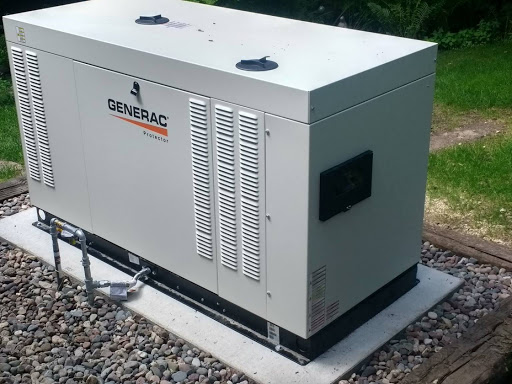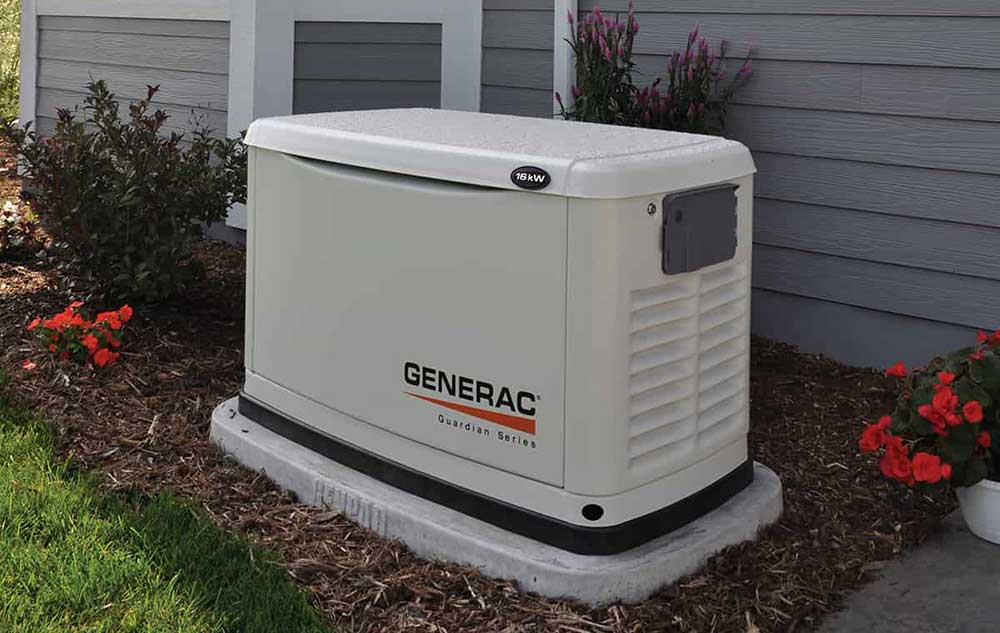Blackouts are nothing new, but major storms over the past few years have hammered home the importance of electrical power. Kuehn Building and Remodeling has provided and installed a number of generators for our clients. It would be our pleasure to coordinate a meeting between our electricians, suppliers and yourselves to discuss your needs and questions you may have.
Generators
Blackouts don’t need to lead to spoiled food and cold nights…

Here are six points to help you decide whether they’re worth the investment.
WHAT ARE THEY?
Standby generators offer a steadfast solution to extended outages. Unlike portable generators, these are installed permanently on a concrete pad in your yard and will provide uninterrupted backup for days. That’s becausethey’re connected directly to your home’s electrical panel and powered by an external fuel supply, such as natural gas, liquid propane, or diesel. Smaller, air-cooled essential-circuit units (below) are slightly larger than portable generators and can energize just a few circuits at a time. Larger, liquid-cooled whole-house systems will do just as their name suggests—they’ll comfortably power an entire home.

How They Work
The brains behind the operation is an automatic transfer switch that disconnects you from your utility after detecting an interruption in service. Once your home is safely off the grid, the switch starts up the generator before transferring its power to the home’s electrical panel.
When municipal power resumes, the switch shuts down the generator and reconnects your house to the grid. This seamless operation makes standby generators ideal for families with small children, as well as those needing uninterrupted use of electric-powered medical equipment. They’re also crucial for anyone running a home business. The transfer switch acts as a safety mechanism too: It prevents back-feeding electricity to the grid, a potentially lethal practice that can start fires and harm utility workers attempting to restore your neighborhood’s power.
Installation Drawbacks
Cities often have noise ordinances restricting the installation of generators. A machine may be rated at 62 decibels, but that’s often measured at 25 feet. What does that sound like? Imagine a neighbor idling a Harley—tolerable in a rural environment but unacceptable in a tight city lot. Additionally, most building codes require generators to be at least 5 feet from a house opening and 5 feet from flammable materials, making urban installations tricky. Fuel-tank placement is almost always restricted, especially near parking lots and schools.
They’re Not For Rookies
Hire a professional to assess not only your load needs (see No. 5), but also the logistics of installing a generator in your home. If you’re planning on connecting to your local natural gas system, you’ll need a high-pressure, high-volume line. Most generators require gas supplied at 5 to 7 inches of water-column pressure, which isn’t available in some towns. If it is, you’ll probably have to pay your utility a fee to access it.
Installing a standby generator is no DIY project, either. It requires advanced electrical and plumbing skills, as well as knowledge of local building codes. You’ll also need permits before you start and inspections when you’re done. Because of these complexities, professional installations can sometimes triple the cost of a generator.
They’re Big and Costly
The higher the generator’s capacity, the more circuits it can power at once. However, the size of your generator should be determined by your needs in an emergency, temporary situation—you’re not looking to power each and every appliance and gadget during desperate times. The chart below will give you some idea of how much electrical capacity you’ll need, though you should consult a professional for an accurate load analysis. He or she will calculate the combined load of the devices you intend to run simultaneously while also considering the starting wattages of motor-driven appliances such as refrigerators and AC units.

They Need a Lot of Upkeep
Like cars, standby generators run nonstop for many hours, so they have to be maintained as if they were, well, cars. Generally, bigger units require more care. Your generator will stay healthy through a lifetime of outages if you check the engine oil daily during use, run it at no more than 75 percent of its rated capacity, replace overworked or deformed motor brushes, and avoid starting or stopping it under load whenever possible. It is important to have it serviced after extended use.

